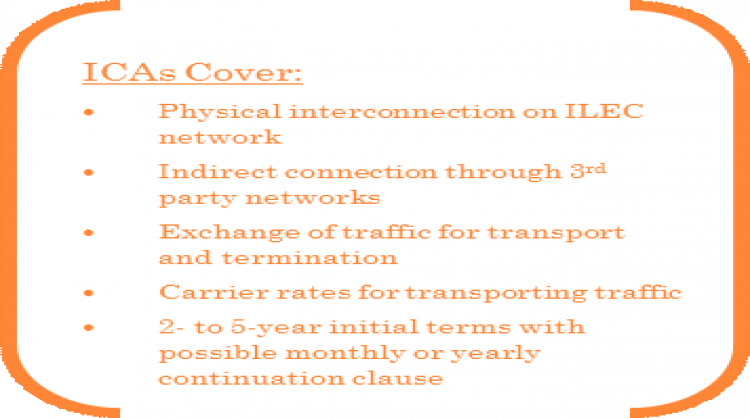Interconnection Agreements (ICAs): What you Need to Know
December 3, 2013 | by Samantha Schultheis

Interconnection agreements (ICAs) have been around for a while, but how they are used and the rules governing them have continued to evolve through the years. Now, as the FCC implements its reform of the inter-carrier compensation system, many predict ICAs will continue to grow in importance. These contracts among carriers are even expected to replace access tariffs as carriers move to the new access charge framework, many citing – including the FCC – that this will be the primary way carriers set the terms for how traffic is exchanged. A survey conducted by CCMI in early 2013 revealed that 90% of the respondents thought ICAs would have a significant impact on their business in the coming years.
What exactly do ICAs cover?
ICAs were first introduced as part of the 1996 Telecommunications Act and the rules regarding them have evolved with the FCC’s USF/ICC Transformation Order in 2011. It is unclear whether the expanded use will result in regulated ICAs filed with state commissions or unregulated ICAs that are not filed, but either way it’s still important to understand the key areas they cover.

The FCC’s transition to a bill-and-keep methodology seeks to move interstate access, intrastate access and reciprocal compensation all under the jurisdiction of the FCC. This current initiative is still being challenged by the states and other stakeholders, but is the driving force behind the growing importance of ICAs. This doesn’t mean tariffs will be going away, as this initiative only covers terminating switched access – other tariffed access services will not be affected. And, the jury is still out whether or not ICAs are the answer. Currently, the FCC is seeking industry comments on whether ICAs or tariffs are the best method to govern carrier-to-carrier relationships.
Preparing for their expanded use
Whether or not ICAs win out as the sole method of negotiation for terminating switched access, there is a strong possibility they will still play a key role going forward. Currently, negotiated or arbitrated ICAs between ILECs and CLECs are filed with the state commissions. Even though they are publicly available, CCMI has found that finding and navigating through ICAs can be difficult:
-
The majority of ICAs are not available electronically and the paper-based systems are poorly maintained
-
The sheer number of those filed is daunting
-
There is no standardized format making it hard to identify any amendments
-
Even if states have electronic access to ICAs, it does not mean all filed with that state are available to download
As carriers look to utilize ICAs, they will be faced with these and other challenges in their move to the new access charge framework. Download The Basics of ICAs: Stay Ahead of the New FCC Rules to learn more about the changing rules regarding ICAs and how your company can better prepare for their expanded use.


